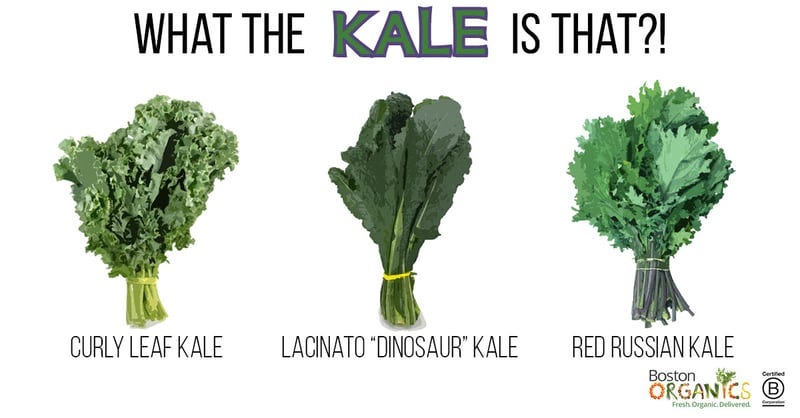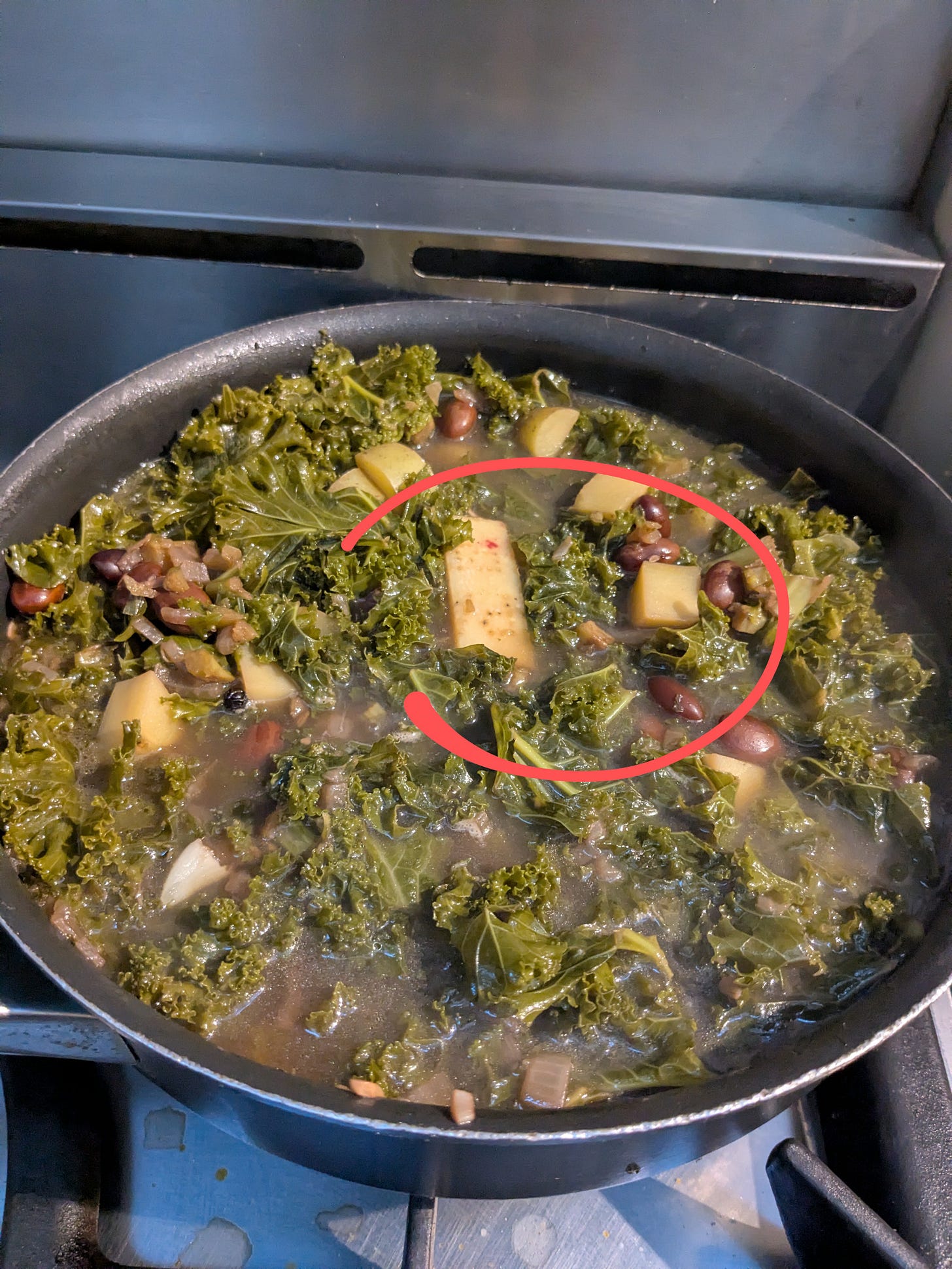How does an obscure vegetable become A Thing? You might not consider an avocado obscure, but post-war hostesses wouldn’t have known how to prepare what were then called ‘avocado pears’ until a marketing company paid for by California avocado farmers got behind them with recipes for dips with couch-potato appeal. Some credit Gwyneth Paltrow with taking them a leap further, uplifting them from 1980s dinner party starter whose hollow was crammed with mayo-laced prawns to metrosexual breakfast with a recipe for avocado-on-toast in her 2013 cookbook ‘It’s All Good’.
That the avocado should have its continuing day in the sun is understandable. It’s attractive, and mildly exotic, and to most diners, appealing to eat. A vegetable whose popularity is a challenge to understand is kale. Yet for some time now, kale has been established as desirable - raw in salads, cooked in soups and side dishes, and roasted into crisps. How come? It’s not visually beguiling, either in a bunch or in a bag ready-chopped by the supplier. If you don’t cook it through, it’s chewy and bitter. If you do cook it right, it still makes a bitter mouthful.
Yet kale is loved. It’s been turned into snacks, popcorn, smoothies, cocktails, and face creams. In 2013, 262 babies in the United States were named Kale. Beyonce wore a t-shirt with KALE written across it for a video.
Just as the avocado owes its popularity to a marketing firm hired by the California Avocado Commission, so kale’s popularity might be laid at the doorstep of My Young Auntie, boutique PR agency of British transplant Oberon Sinclair who prides herself on using guerilla marketing skills and eccentricity to boost her clients and products. There’s a belief the company was hired by the American Kale Association. Except the AKA doesn’t exist. Sinclair made it up because she loves, just loves kale. And guerilla marketing. This was in 2012. Yes, that far back. It takes time to create A Thing. Still, one year later, kale was off, boosted by the New York Times touting it as “veggie chic” for appearing at high end galas and on top restaurant menus.
What’s interesting is that we all seem to believe that kale is a miraculously healthy vegetable. Yet it doesn’t even make the top ten in a 2014 ranking of vegetables and fruits by the US Center for Disease Control. With watercress at No.1, kale only clocks in on the list at No.15, beaten for nutrients-density by Chinese cabbage, chard, beet greens, spinach, chicory, lettuce, parsley, romaine, collard, turnip and mustard greens, endive - and even chives.
Long before My Young Auntie’s intervention, New York Times food critic Mimi Sheraton brought this humble brassica to the attention of a wide audience, writing in 1976 in praise of kale. Although she later retracted her enthusiasm, it perhaps should be she who is credited with its promotion to the discerning dining public.
But even Sheraton was 20 centuries behind the trend. Derived from wild mustard, what the Romans referred to as Sabellian kale had been cultivated well before 2000 BC, in the eastern Mediterranean and Asia Minor. Records in 14th century England make a formal distinction between loose-leafed kale and round hard-headed cabbages.
David Goodrich Fairchild, an American botanist and plant explorer, is credited with introducing kale, along with over 200,000 other plants and crops, into the US. He had brought it back from Croatia where it flourished, and where it was also planted as a means of desalinating soil.
There are several varieties of kale. Curly leaf kale with its ruffled leaves is probably the most familiar. The pocked leaves of Lacinato kale, also known as Tuscan kale, have a more delicate, less bitter, flavour. This is the best variety for eating raw in salads. If you can’t find any to make one, use common curly kale but massage it thoroughly, having first dressed it in a little oil, squeezing it over and over until it begins to soften. Red Russian kale, introduced in the 19th century by Russian traders first into Canada then into the United States, has flat leaves whose veins are red or purple. This is the mild, peppery kale for turning into kale chips if you have a mind, though it also responds to being steamed, blanched or sautéed.
Big Food Biz employs hundreds of companies to predict food trends. For 2025, brands are referencing ‘heritage’ to invoke an image of - next buzz word - ‘authenticity’ in their foods, and kale is definitely both. Other marketing companies think this year will see an increase in the focus on grains, pulses, and legumes. They must have been reading Tabled.
This recipe combines both kale and beans. It has been one of my favourites at this time of year for decades, which might make it ‘heritage’. Comforting, nutritious and cheap, it creates a soup that can act as a substantial one-dish meal. There aren’t any precise quantities - just use what proportions of each ingredient as you have them. The only trick is to throw a rind of Parmesan into the pan as it simmers.
Always save and freeze your Parmesan cheese rinds for future use. They add an enriching umami to robust soups and stews. Start with the one on the lump that you’ve bought to grate over the finished soup.
Serves 2-4, depending on whether it’s a soup or main course. You’ll need olive oil, beans (preferably Borlotti), a big bag of chopped kale because it melts down significantly, a medium red onion, a large potato, a large clove of garlic or two, a bay leaf, a generous pinch of red chilli flakes, stock or water, a Parmesan rind and the cheese, grated. I recommend you make it the day before you want it - allowing the flavours to mellow makes a big difference.
Overnight, soak 170-250g/6-8oz dried borlotti beans in deep water. The next day, drain the beans and cover anew with water then set, with a lid askew, over a low heat to simmer until tender but still have a little bite. It depends on the age of your beans how long it will take, but start checking after 30-40 minutes. Drain and set aside.
Peel and finely chop a medium red onion from tip to root. Slowly melt it in a generous glug of olive oil. Add a finely sliced large clove of garlic and a large pinch or more of red pepper flakes. Stir and sauté 1-2 minutes then add the drained beans, a large potato you have scrubbed but not peeled cut into small cubes, and a big sack of ready-chopped kale whose stumpy stalks you have removed. Stir well into the mass. Add the bay leaf and cover with water or stock by 5 cms/2 ins, add a rind of Parmesan, salt to taste, and set with a lid very slightly askew over a low flame, to simmer 20 minutes until the potato is cooked through and the kale has completely softened. Serve with a bowl of grated Parmesan.









Made the soup last night - delicious! I've been rediscovering beans, and used 2 different kinds of kale. The result made for a very hearty meal. A question, please: while kale is readily available here in the Pacific NW, I have not found it at my local market in the Dordogne while at our home there. French friends don't know what I'm talking about when I ask them about kale. Google translates kale as 'chou frisé', but that seems to be a cabbage. Have you found it there, or has kale PR simply not reached the area? Perhaps I'll have to consider it a trade-off: no kale in France, but did discover the lovely lemony tartness of sorrel, which I can't find here...
I love the stalks. Best rubbed with some olive oil and lemon first. But I’m a stalks fan anyway, the inside of broccoli stalks is sublime:). Definitely going to be trying this recipe at Silicon Towers !